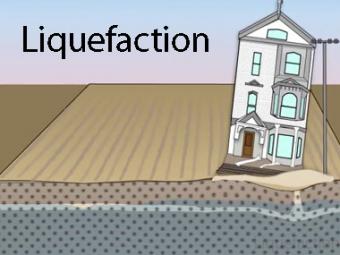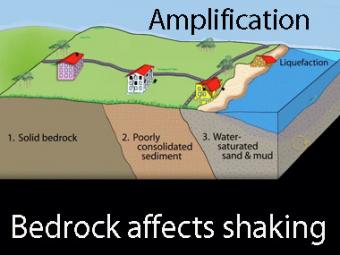
Why did buildings tip over during this earthquake?
Liquefaction is a process by which water-saturated sediment temporarily loses strength and acts as a fluid. This effect can be caused by earthquake shaking. This cutaway (cross section) animation shows how liquefaction of compacted sediment in the San Francisco area led to the tilting of houses during the 1906 earthquake. Tilted Victorian home at Howard and 17th Streets in the Mission District of San Francisco showing liquefaction-related damage from the 1906 earthquake. This area is underlain by marsh deposits that were covered by artificial fill in the middle to late 1800s. The earthquake shaking caused the artificial fill to liquefy and lose its ability to support the house. (Photograph by G.K. Gilbert of the U.S. Geological Survey; description from USGS).

Highly generalized animation reflects the arrivals of P, S, and surface waves to 3 closely spaced buildings. Exaggerated movement of the buildings reflects the relative motion recorded by the seismograms.

Sand Boil: sand-laden water can be ejected from a buried liquefied layer and erupt at the surface to form sand volcanoes; the surrounding ground often fractures and settles.